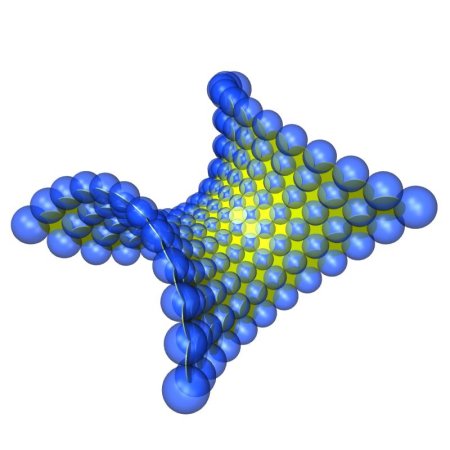architectural s-meshes

s-isothermic enneper surface by Tim Hoffmann
According to the blog tesselion (via boing boing) which is a blog about the project tesselion (Project Collaboration: Marc Fornes (www.theverymany.net), Adrienne Yancone (www.diecreative.com)) :
Recently the development of planar quadrilateral meshes have become a strong interest in the architectural community due to their potential ease for constructing complex surfaces. A race has begun to develop a system of flat panelization of free form surfaces which would enable large scale, efficient and economic, construction from flat sheet material.
I didnt know that there was an architectural race going on!
From the information given on the blog it is unfortunately hard to understand what they actually do in their project, I couldnt find a documentation. It looks very much as if they are laser cutting quadrilateral stances which are based on some computer modelled quadrilateral meshes.
An useful ressource here is the book: Architectural Geometry by
H. Pottmann, A. Asperl, M. Hofer and A. Kilian of the
Geometric Modeling and Industrial Geometry research unit at the Institute of Discrete Mathematics and Geometry, Vienna University of Technology
From the booktext:
Geometry lies at the core of the architectural design process. It is omnipresent, from the initial form-finding stages to the actual construction. Modern constructive geometry provides a variety of tools for the efficient design, analysis, and manufacture of complex shapes. This results in new challenges for architecture. However, the architectural application also poses new problems to geometry. Architectural geometry is therefore an entire research area, currently emerging at the border between applied geometry and architecture.
I am not sure wether they discuss how to treat s-isothermic surfaces like the above enneper surface by Tim.
…and I doubt that my dear sister is reading this post, she is a bit ignorant, when I want her to learn more math…:)…no seriously: she has to teach a lot and thus has not so much time for research or blog reading.